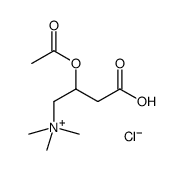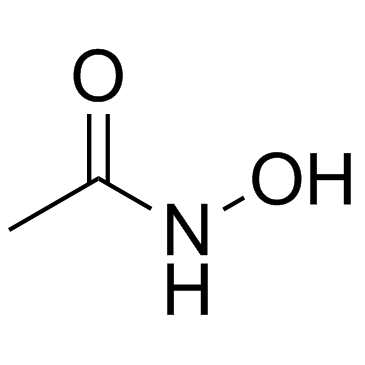2504-11-2
| Name | (2-acetyloxy-3-carboxypropyl)-trimethylazanium,chloride |
|---|---|
| Synonyms |
rac. Acetylcarnitinchlorid
Acetylcarnitin-chlorid rac. Acetyl-carnithin EINECS 219-709-3 O-Acetylcarnitinhydrochlorid Acetyl dl-carnitine chloride MFCD00080826 Evans Blue tetrasodium salt Acetyl-DL-carnitine hydrochloride |
| Description | (±)-Acetylcarnitine chloride (Acetyl dl-carnitine chloride) is a weak cholinergic agonist with cholinergic properties. (±)-Acetylcarnitine chloride is an important intermediate in lipid metabolism[1][2]. |
|---|---|
| Related Catalog | |
| In Vitro | Large increases of Acetylcarnitine concentration during the flight of the blowfly and the presence of an active Acetylcarnitine transferase indicate that Acetylcarnitine is important in carbohydrate metabolism. Acetylcarnitine has been synthesized by the choline acetylase system isolated from brain tissue and is destroyed by cholinesterase[2]. |
| In Vivo | In rats, the infusion of 2 mg (±)-Acetylcarnitine chloride decreases blood flow through the hind limb vasculature 50%. (±)-Acetylcarnitine chloride also potentiates the inhibitory effect of adrenaline on the isolated rabbit duodenum[3]. |
| References |
| Molecular Formula | C9H18ClNO4 |
|---|---|
| Molecular Weight | 239.69700 |
| Exact Mass | 239.09200 |
| PSA | 63.60000 |
| Storage condition | −20°C |
CHEMICAL IDENTIFICATION
HEALTH HAZARD DATAACUTE TOXICITY DATA
|
| RIDADR | NONH for all modes of transport |
|---|---|
| WGK Germany | 3 |
| RTECS | BP2979200 |
| Precursor 0 | |
|---|---|
| DownStream 1 | |

